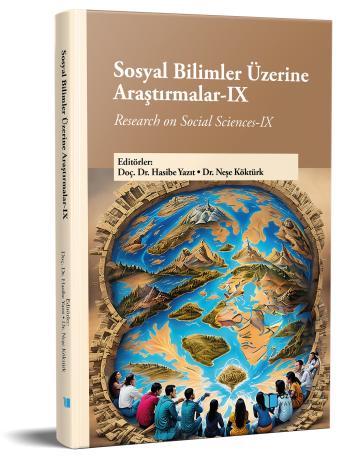
Konya Doğanhisar Deştiğin Ulu Mosque and Hand-drawn Ornaments
Chapter from the book:
Yazıt,
H.
&
Köktürk,
N.
(eds.)
2023.
Research on Social Sciences- IX.
Synopsis
Deştiğin is a settlement fifteen kilometres away from Doğanhisar district of Konya. Located in the centre of Deştiğin, Ulu Mosque is a building with three naves in the north-south direction, built with rubble stone and bonding timbers, with a plan close to square, with the entrance and the last congregational prayer in the east. Despite its simple architecture, it has rich hand-drawn ornaments painted in red, blue, green and yellow. The hand-drawn works of the building, whose year of construction is unknown, dates back to 1287 (C.E. 1870/71). The ornaments on the south wall of the congregational prayer and on the walls of the sanctuary make the building valuable even though they lost their qualities in the repairs. The wall surfaces were divided horizontally into four, and the upper three units were used as ornament areas. Vegetable ornaments, trees with or without fruits, placed on twisted branches, create a cheerful and lively garden inside the mosque. Khanqah symbols such as, “sailing ship”, “single domed mosque with four minarets”, “tac-ı şerif”, “ battle-ax”, “spear”, “mace” and “wheel of fortune”, “snake”, “spiritual realm”, “tree with red fruit”, “star and crescent”, “ single and triple kandil”, “watch”, “towel” motifs were are placed between the embroideries A writing pattern that can be seen in all mosques was used on the walls, and two symmetrically arranged, "Ali" were written on the south wall. In the study, ornament elements were defined, and the meanings of the motifs were investigated by taking into account the khanqah symbols used. The Sufi schools to which the hand-drawn master or masters who made the ornaments may have belonged were examined, and the visual sources that are the source of the ornaments were tried to be identified. Similar hand-drawn ornaments can be found in the mosque of the Çavuş village of the Hüyük district, twenty kilometres away from the town of Deştiğin. These buildings, which are the works of travelling dervish masters, provide important data on the artistic activities in the rural areas of the Göller region of Konya in the second half of the 19th century.

